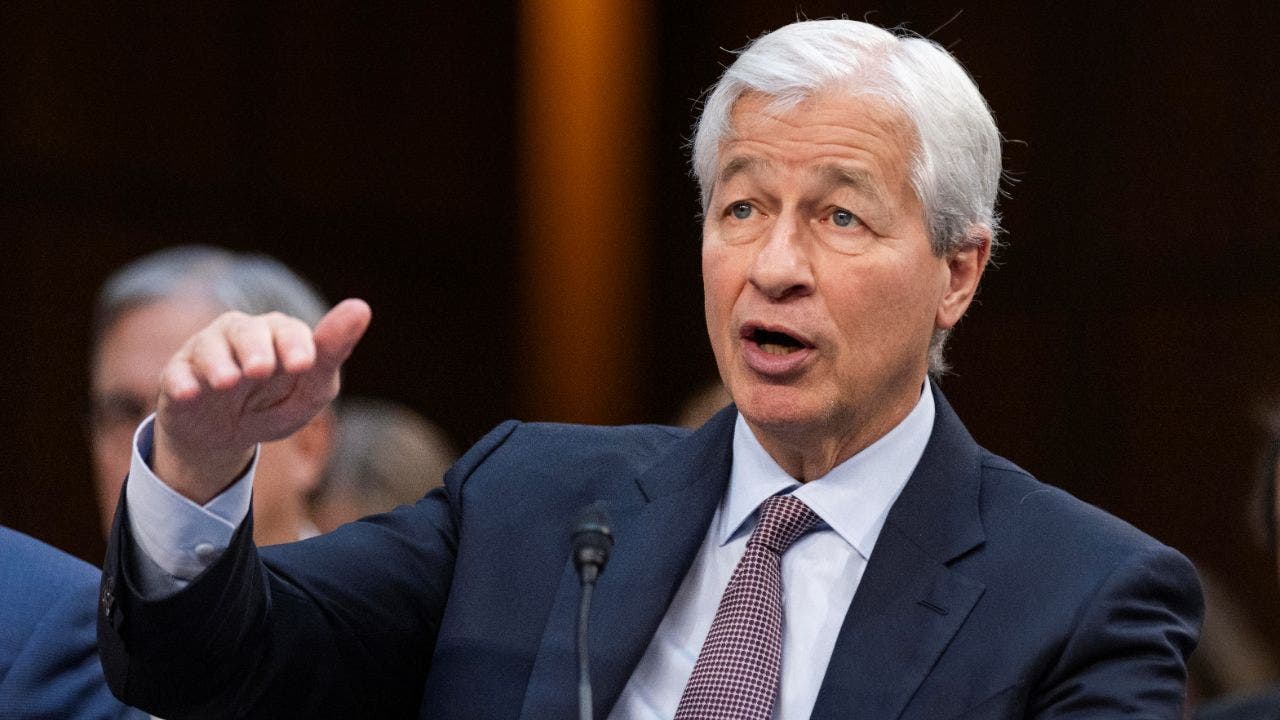
JPMorgan Chase CEO Jamie Dimon on the Federal Reserves rate trajectory, 2024 economy, looming bank regulations and artificial intelligence.
JPMorgan Chase chairman and CEO Jamie Dimon says the U.S. is speeding toward a cliff as the nation’s runaway debt continues to mount, sounding the alarm that the situation needs to be tackled before it results in a crisis.
The chief executive of the nation’s largest bank issued the warning during a panel discussion at the Bipartisan Policy Center on Friday, when he was asked for his take on what it means for the economy if the federal government fails to address the issue.

Jamie Dimon, Chairman and CEO of JPMorgan Chase, attends a hearing on Annual Oversight of Wall Street Firms before the Senate Committee on Banking, Housing, and Urban Affairs in Washington, D.C., the United States, on December 6, 2023. (Aaron Schwartz/Xinhua via Getty Images / Getty Images)
| Ticker | Security | Last | Change | Change % |
|---|---|---|---|---|
| JPM | JPMORGAN CHASE & CO. | 172.28 | -0.69 | -0.40% |
Dimon began his response by recalling how the economy looked back in 1982, with inflation around 12%, the prime rate around 21.5% and unemployment somewhere around 10%, and the debt was around 35% of gross domestic product. He noted that today, the debt-to-GDP ratio is above 100%, and said it is projected to reach 130% by 2035.
“And it’s a hockey stick,” Dimon said, describing how the debt growth would appear on a chart.
US NATIONAL DEBT TRACKER FOR JAN 25, 2024: SEE WHAT AMERICAN TAXPAYERS (YOU) OWE IN REAL TIME
He said the U.S. has not reached the “hockey stick” surge yet, “but when it starts, markets around the world – by the way, because foreigners own $7 trillion of U.S. government debt – there will be a rebellion, and that is the worst possible way to do it.”
Economist Peter Morici breaks down what the national debt is, why it ballooned to more than $34 trillion and what it means for Americans.
“It is a cliff, we see the cliff,” Dimon said. “It’s about 10 years out, we’re going 60 miles an hour [toward it].”
LARGE DEFICITS, HIGH INTEREST RATES MAKING FEDERAL DEBT LESS SUSTAINABLE
Dimon went on to agree with fellow panel member former House Speaker Paul Ryan, who called the snowballing debt “the most predictable crisis we’ve ever had.”
The outlook for the federal debt level is bleak, with economists increasingly sounding the alarm over the torrid pace of spending by Congress and the White House.
FreedomWorks chief economist Steve Moore joins ‘The Bottom Line’ to weigh in on the Biden White house blaming the GOP for ‘90%’ of the national debt increase.
The latest findings from the Congressional Budget Office indicate that the national debt will nearly double in size over the next three decades. By the end of 2022, the national debt grew to about 97% of gross domestic product. Under current law, that figure is expected to skyrocket to 181% at the end of 2053 — a debt burden that will far exceed any previous level.
GET FOX BUSINESS ON THE GO BY CLICKING HERE
Should that debt materialize, it could risk America’s economic standing in the world.
FOX Business’ Megan Henney contributed to this report.






